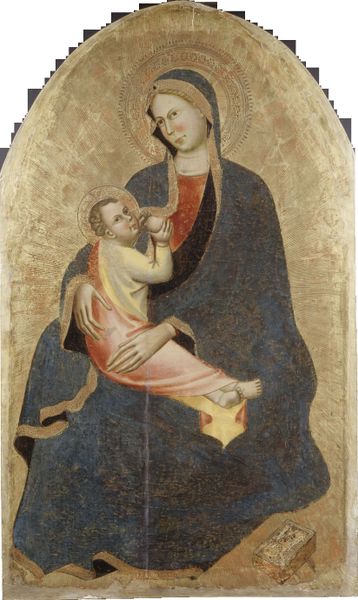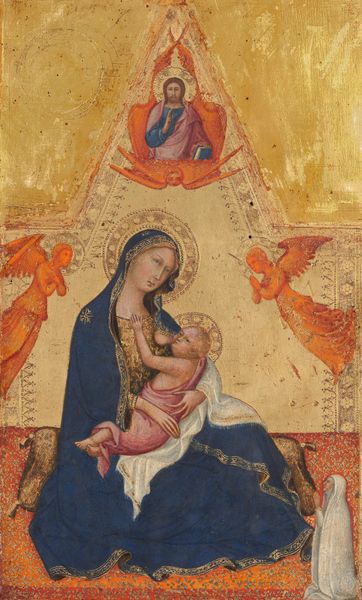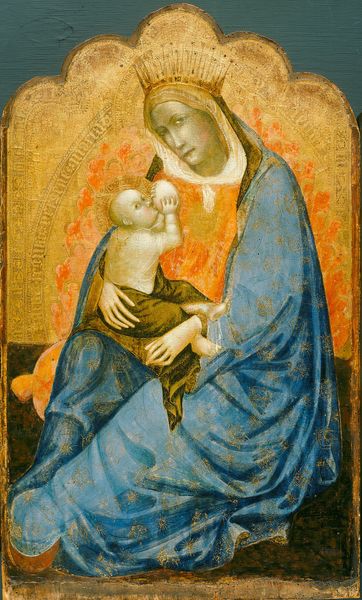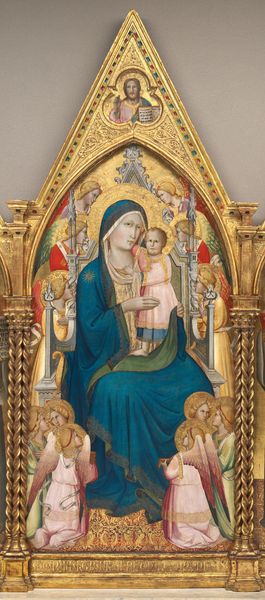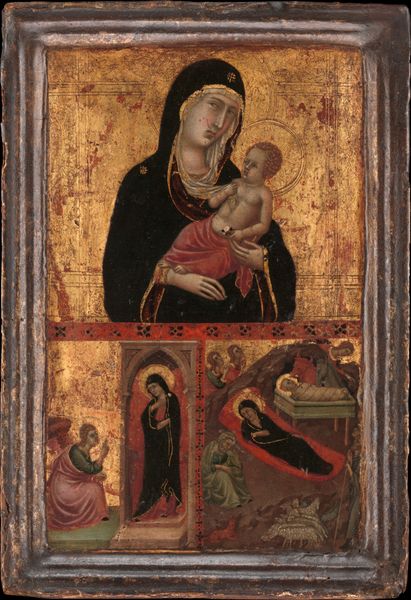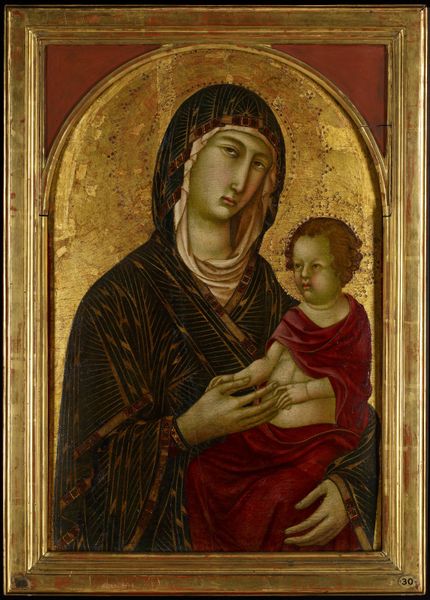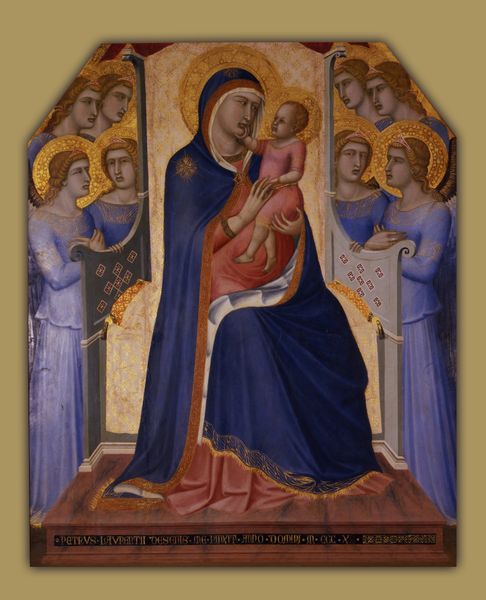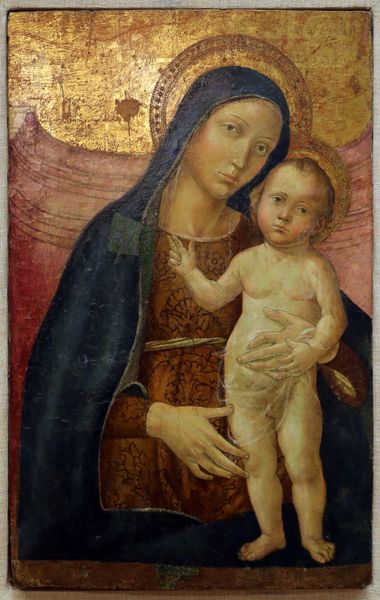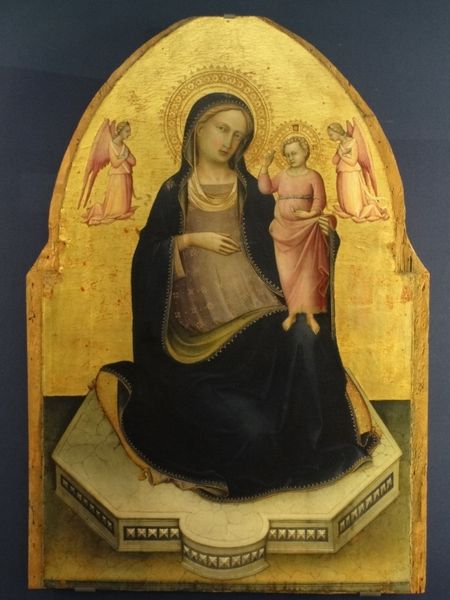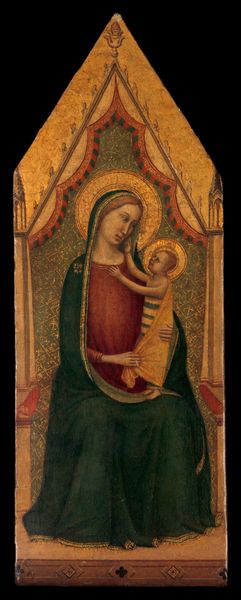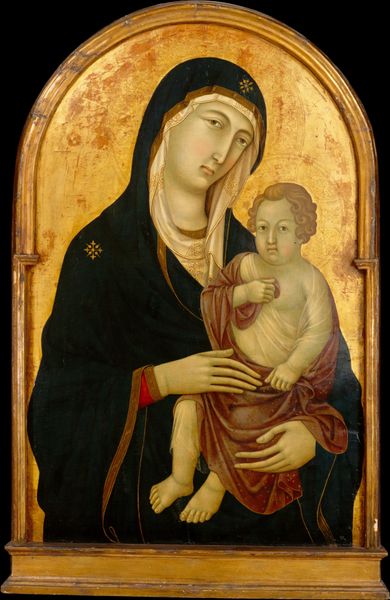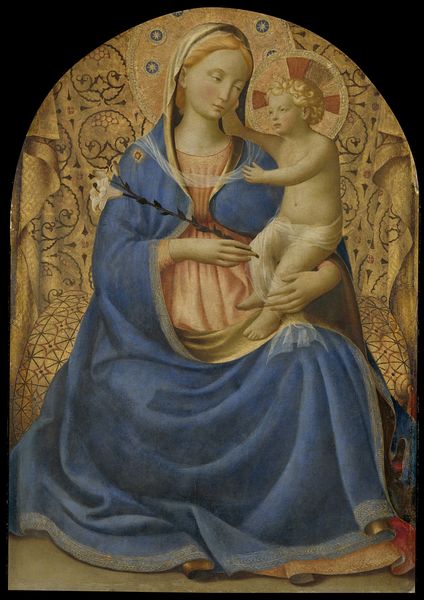
tempera, painting
#
portrait
#
medieval
#
tempera
#
painting
#
figuration
#
oil painting
#
italian-renaissance
#
portrait art
Dimensions: painted surface: 113.5 × 52.8 cm (44 11/16 × 20 13/16 in.) overall: 116.3 × 55.6 cm (45 13/16 × 21 7/8 in.) framed: 127 x 66.2 x 11.4 cm (50 x 26 1/16 x 4 1/2 in.)
Copyright: National Gallery of Art: CC0 1.0
Lorenzo Monaco painted this ‘Madonna and Child’ panel in the early 15th century, likely using tempera on wood, in Florence, Italy. The ethereal depiction, the Virgin's sorrowful expression, and the use of gold leaf indicate the importance of religious devotion in Florentine society. The image is infused with meaning through its cultural context. During the early Renaissance, Florence experienced both a flourishing of artistic innovation and deep religious faith. Religious institutions like the church and the monastery were major patrons of the arts. Monaco himself was a Camaldolese monk, and the monastery would have been responsible for the commission of such works. The painting speaks to the period’s evolving artistic styles alongside enduring religious traditions. It’s important to note the political implications of religious art, which often served to reinforce social hierarchies and moral values. To truly understand this artwork, one might explore the patronage system of Renaissance Florence, examining monastic archives or commissioning records. Art is contingent on the social and institutional contexts that shape its creation and reception.
Comments
No comments
Be the first to comment and join the conversation on the ultimate creative platform.
